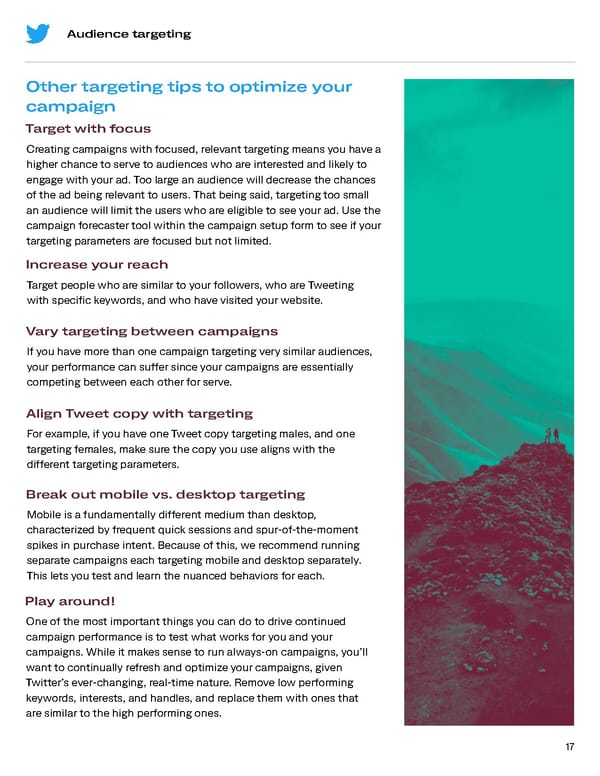Audience targeting Other targeting tips to optimize your campaign Target with focus Creating campaigns with focused, relevant targeting means you have a higher chance to serve to audiences who are interested and likely to engage with your ad. Too large an audience will decrease the chances of the ad being relevant to users. That being said, targeting too small an audience will limit the users who are eligible to see your ad. Use the campaign forecaster tool within the campaign setup form to see if your targeting parameters are focused but not limited. Increase your reach Target people who are similar to your followers, who are Tweeting with specific keywords, and who have visited your website. Vary targeting between campaigns If you have more than one campaign targeting very similar audiences, your performance can suffer since your campaigns are essentially competing between each other for serve. Align Tweet copy with targeting For example, if you have one Tweet copy targeting males, and one targeting females, make sure the copy you use aligns with the different targeting parameters. Break out mobile vs. desktop targeting Mobile is a fundamentally different medium than desktop, characterized by frequent quick sessions and spur-of-the-moment spikes in purchase intent. Because of this, we recommend running separate campaigns each targeting mobile and desktop separately. This lets you test and learn the nuanced behaviors for each. Play around! One of the most important things you can do to drive continued campaign performance is to test what works for you and your campaigns. While it makes sense to run always-on campaigns, you’ll want to continually refresh and optimize your campaigns, given Twitter’s ever-changing, real-time nature. Remove low performing keywords, interests, and handles, and replace them with ones that are similar to the high performing ones. 17
 Engagement Objective Playbook Page 16 Page 18
Engagement Objective Playbook Page 16 Page 18